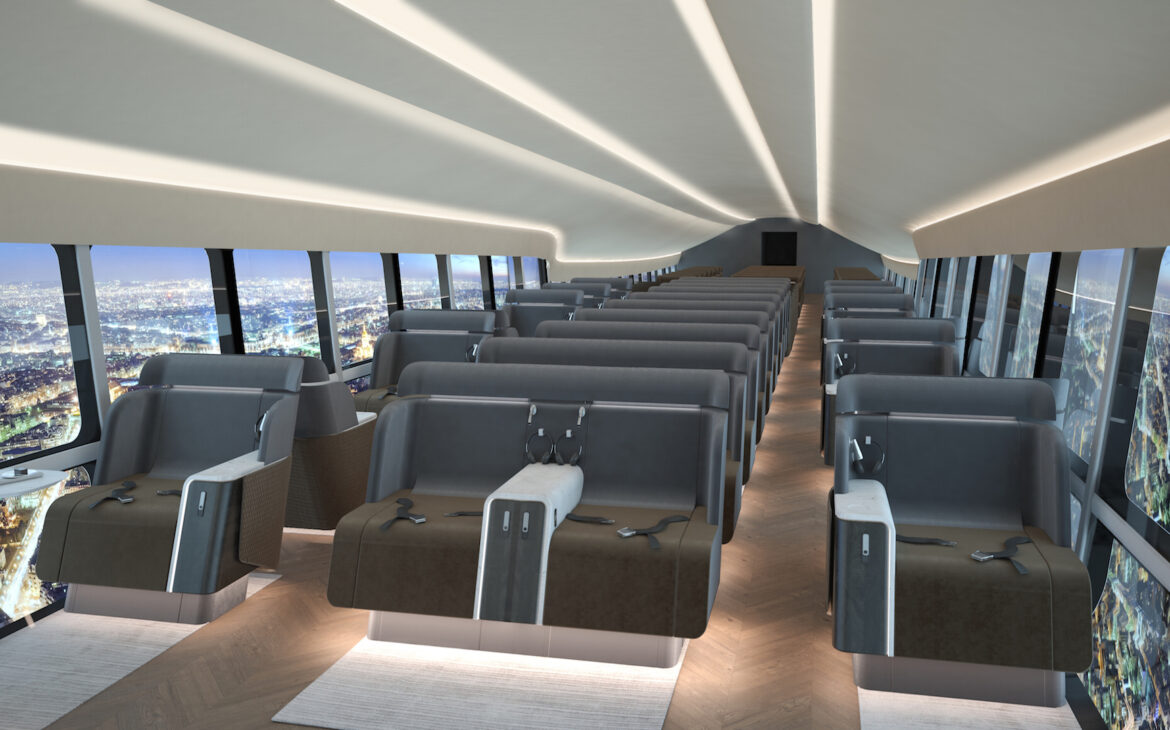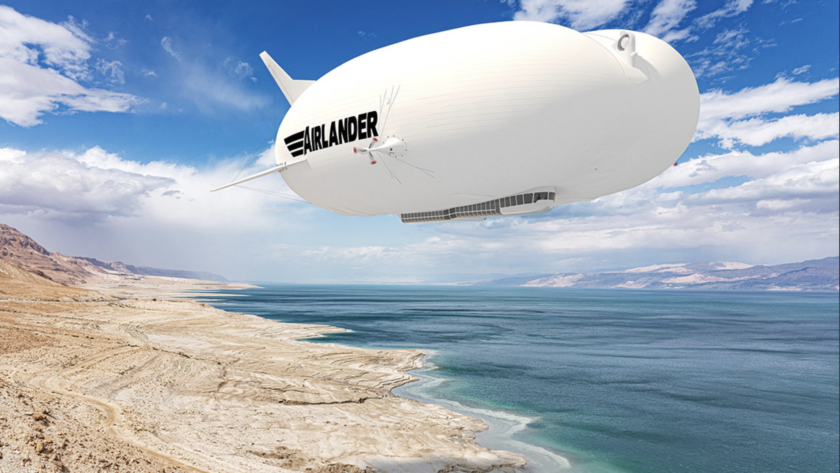Airships may have earned a bad rap due to famous disasters last century, but the concept is set to re-emerge within the next decade as an environmentally friendly means of travel which has a quarter of the carbon impact of conventional jets.
UK-based aviation company Hybrid Air Vehicles (HAV) is working on two concepts – the Airlander 10 hybrid with electric motors powered by hydrogen fuel cells, which will be able to fly 100 passengers on short-haul routes, and the larger Airlander 50. The Airlander 10 still requires twin diesel engines, with its four motors swivelling to rotate so as to provide forward movement while in the air and thrust when taking off.
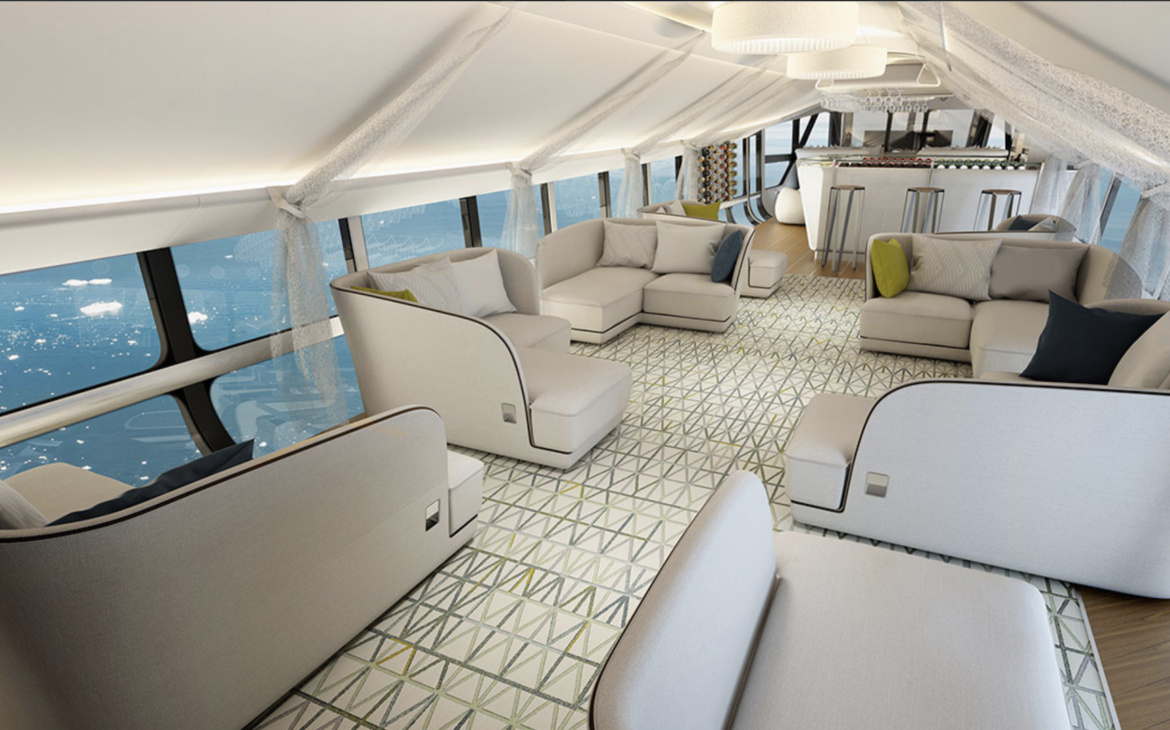
HAV publicly displayed an earlier prototype of the Airlander 10 five years ago which was then nicknamed the ‘Flying Bum’ in reference to its unorthodox shape. The latest iteration has a less controversial shape.
The Airlander 10’s room cabin offers each of up to 100 passengers a comfortable seat with direct access to an aisle. Floor-to-ceiling windows offer a panoramic view and natural light during daylight flying.
“For many decades flying from A to B has meant sitting in a metal tube with tiny windows – a necessity but not always a pleasure,” said George Land, commercial business development director at Hybrid Air Vehicles. “On Airlander, the whole experience is pleasant, even enjoyable. And in the hybrid-electric and future all-electric configurations, Airlander is fit for our decarbonised future.”
The groundwork of creating the Airlander 10 will pave the way for the larger Airlander 50, a fully electric airship that could go into production as early as 2033. It will have a capacity of 200 passengers and 50 tonnes of freight and have a range of 2200km, more than twice the distance between London and Berlin. It would reduce CO2 emissions by 1.15kg per tonne of freight per km when compared to a conventional airplane.
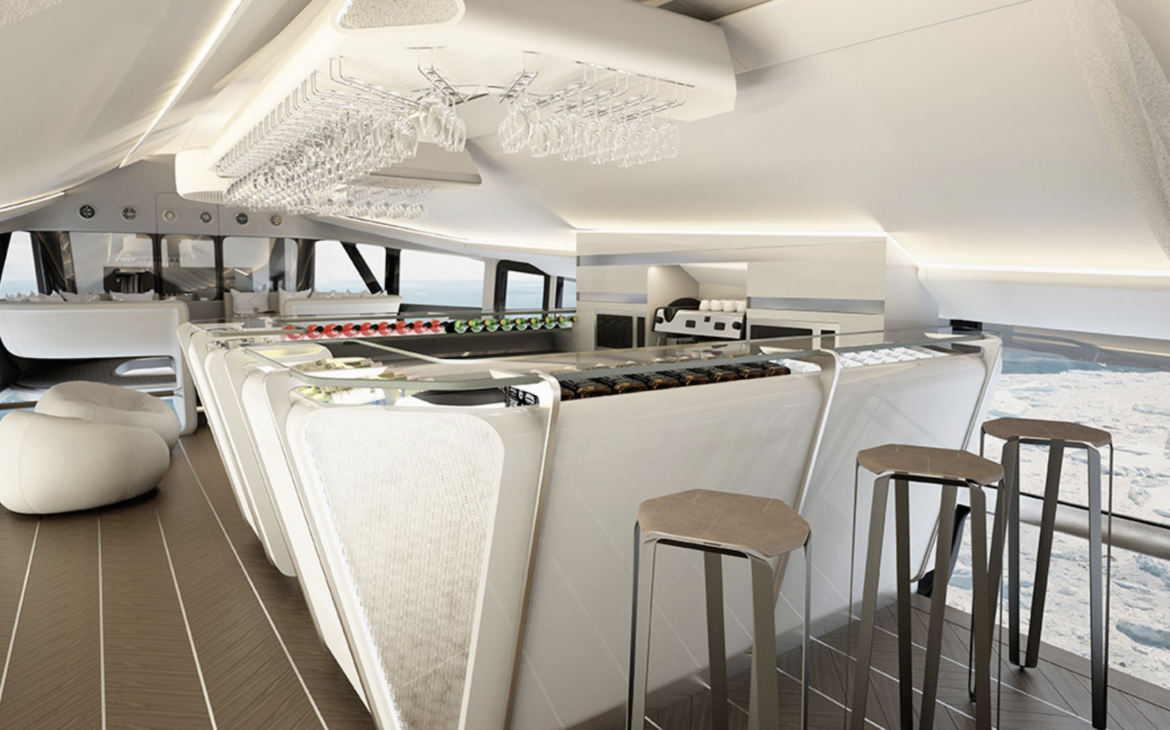
The Airlanders won’t be able to fly as fast as jet-powered planes, but they have the advantage of being able to land or take off from practically any flat service – even water – which means they can take people or freight closer to their end destination, rather than airports often located an hour or more drive from a conventional airport.
The overall travel time between two cities might thus work out about the same, not to mention more comfortable.
The new generation airship’s environmental footprint is not perfect. To stay airborne, it requires helium which is not a renewable resource. A byproduct of the decay of radioactive elements like thorium or uranium, after hydrogen, it is the world’s second-most abundant element in the universe, according to Dezeen. However, due to its lightness, it tends to disappear into space, easily escaping the earth’s gravitational pull and floating away into outer space.
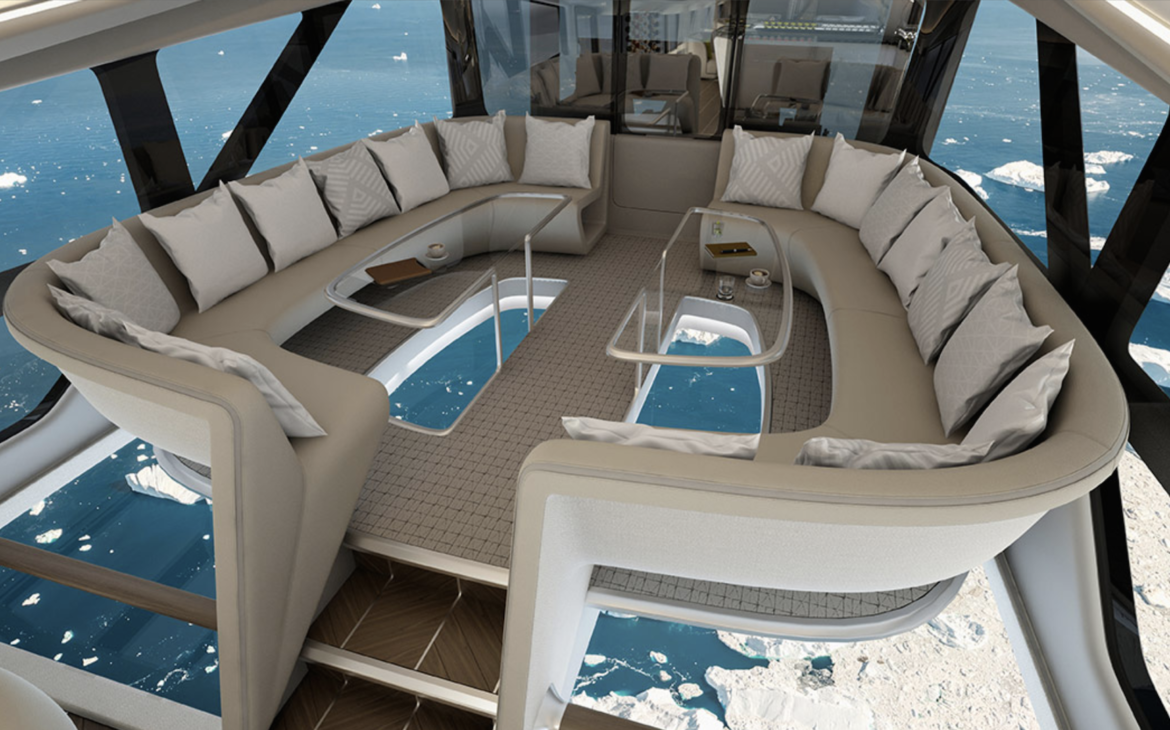
“Although helium is a finite resource, there are ample reserves and new helium fields are being identified now,” the company said. “Even with 600 aircraft in use in the world, Airlander 10s would make up just 1 per cent of the world’s annual helium consumption.”
HAV told Dezeen that using lighter-than-air technology means that Airlander 10 requires significantly less power to generate lift and fly. “Airlander 10, therefore, produces far fewer emissions even before electrification.”
In fact, according to HAV, the individual carbon impact of a passenger flying from Barcelona to Palma de Mallorca would be 4.5kg on the Airlander 10, versus 53kg flying by jet.
As research and development continue and the Airlander models’ environmental footprints continue to fall it’s not clear how widely the new-format airships will be adopted by airlines and cruise companies. However, HAV is targeting at least 12 a year when the Airlander 10 goes into production
